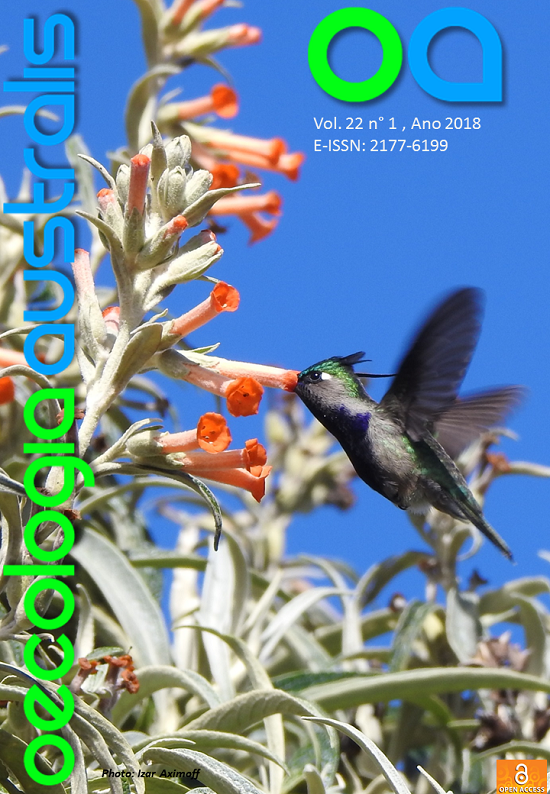Ecology of habitat choice by Macrobrachium brasiliense (Heller, 1862) (Crustacea, Decapoda, Palaemonidae) on different substrates and microhabitats
DOI:
https://doi.org/10.4257/oeco.2018.2201.05Palavras-chave:
Differential behavior, protection, fine sediment, granulometry, territorialism shrimpResumo
The main objective of this study was to analyze the behavior of adult individuals of Macrobrachium brasiliense and their preferences regarding different substrates and microhabitats. The study comprised two distinct experiments; selection of substrates (1) and microhabitats (2). The first one was performed using three samples of substrates with different granulometries: fine sand, coarse sand and gravel. After, the microhabitat selection experiments were carried out using three types of microhabitats: algae, fragments of wood and rocks. There was a significant difference in males substrate preference (ANOVA, p <0.01), which preferred fine substrate. For females, there was no significant difference in preference for any of the three substrates (ANOVA, p> 0.05). Regarding microhabitats, only algae were not selected by males (ANOVA, p <0.01), whereas females chose only the microhabitat composed of wood fragment (ANOVA, p <0.01). Based on these results, the existence of a differential behavior between the sexes for selection of substrates and microhabitats, suggesting that these animals can inhabit different places in the same environment, since in the laboratory a differentiation in their choices was observed.


